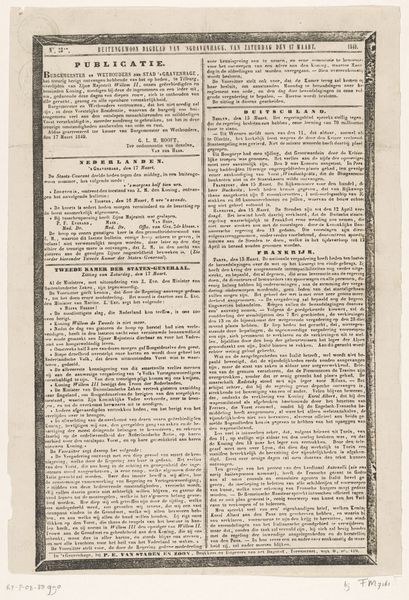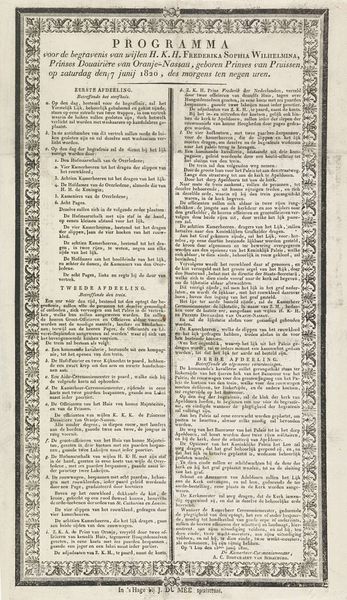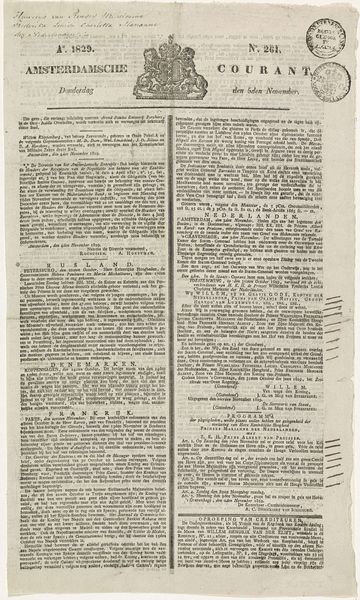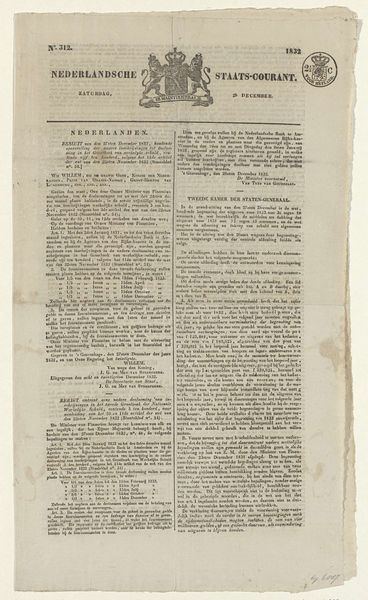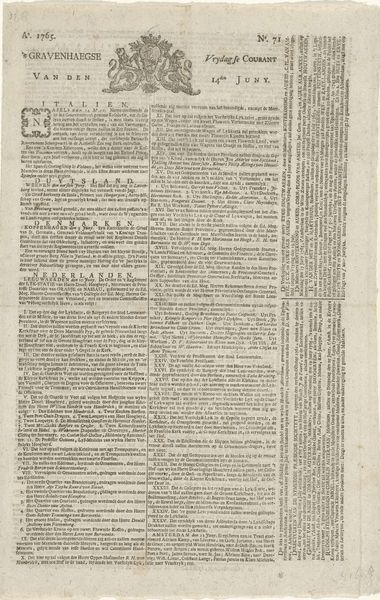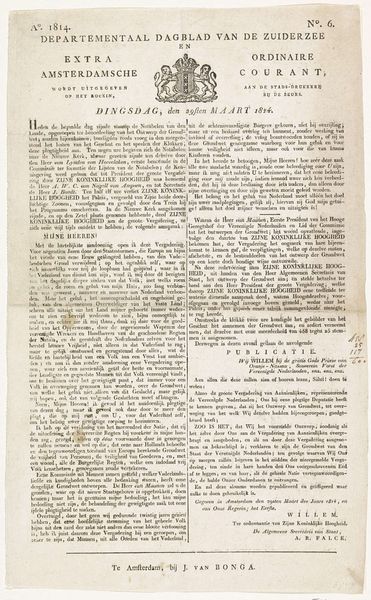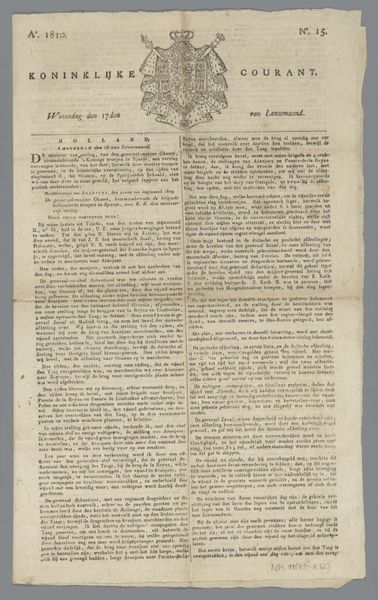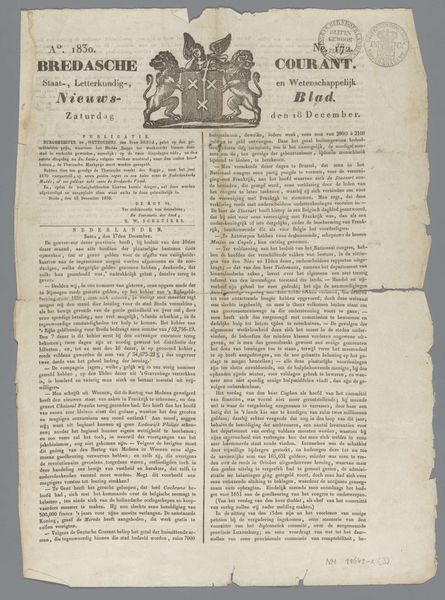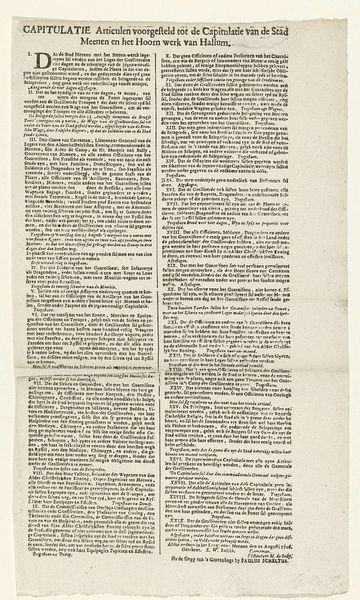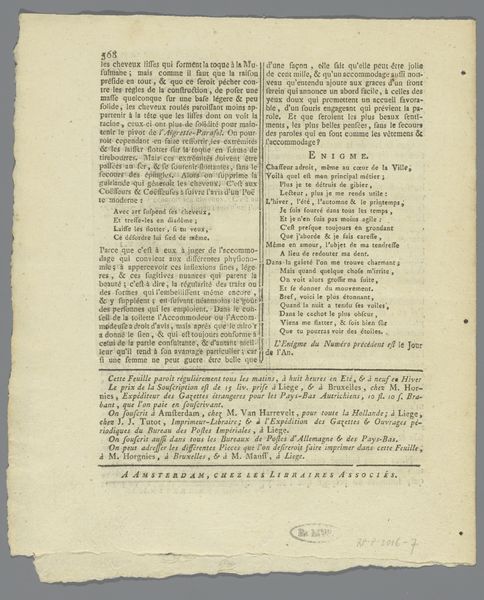
Nederlandsche Staats-Courant, Dingsdag, 24 October. No. 252. 1837 Possibly 1837
0:00
0:00
print, paper, typography
#
neoclacissism
# print
#
paper
#
historical photography
#
typography
#
journal
Dimensions: height 435 mm, width 273 mm
Copyright: Rijks Museum: Open Domain
This is the front page of the Nederlandsche Staats-Courant, dated Tuesday, October 24, 1837, printed by Algemeene Landsdrukkerij. At its apex, we find the Dutch coat of arms emblazoned with a crowned lion, a symbol of courage and nobility, reflecting the nation’s identity. This emblem, however, is not merely a static representation. The lion motif echoes through history, from ancient heraldry to the Lion Gate of Mycenae. We see it reappear throughout centuries in countless contexts, evolving each time, as if carried on the tides of memory. It is an archetype, an enduring image that embodies power and authority. Just as the image of a lion conjures primal associations, so too does the act of bearing arms and the act of reading. The emotional power of these symbols engages us on a subconscious level. Consider, then, how these archetypes are not merely historical relics, but rather active agents in shaping our understanding of the world. It is a non-linear progression, resurfacing and evolving, taking on new meanings in different contexts, shaped by collective memory and subconscious associations.
Comments
No comments
Be the first to comment and join the conversation on the ultimate creative platform.
